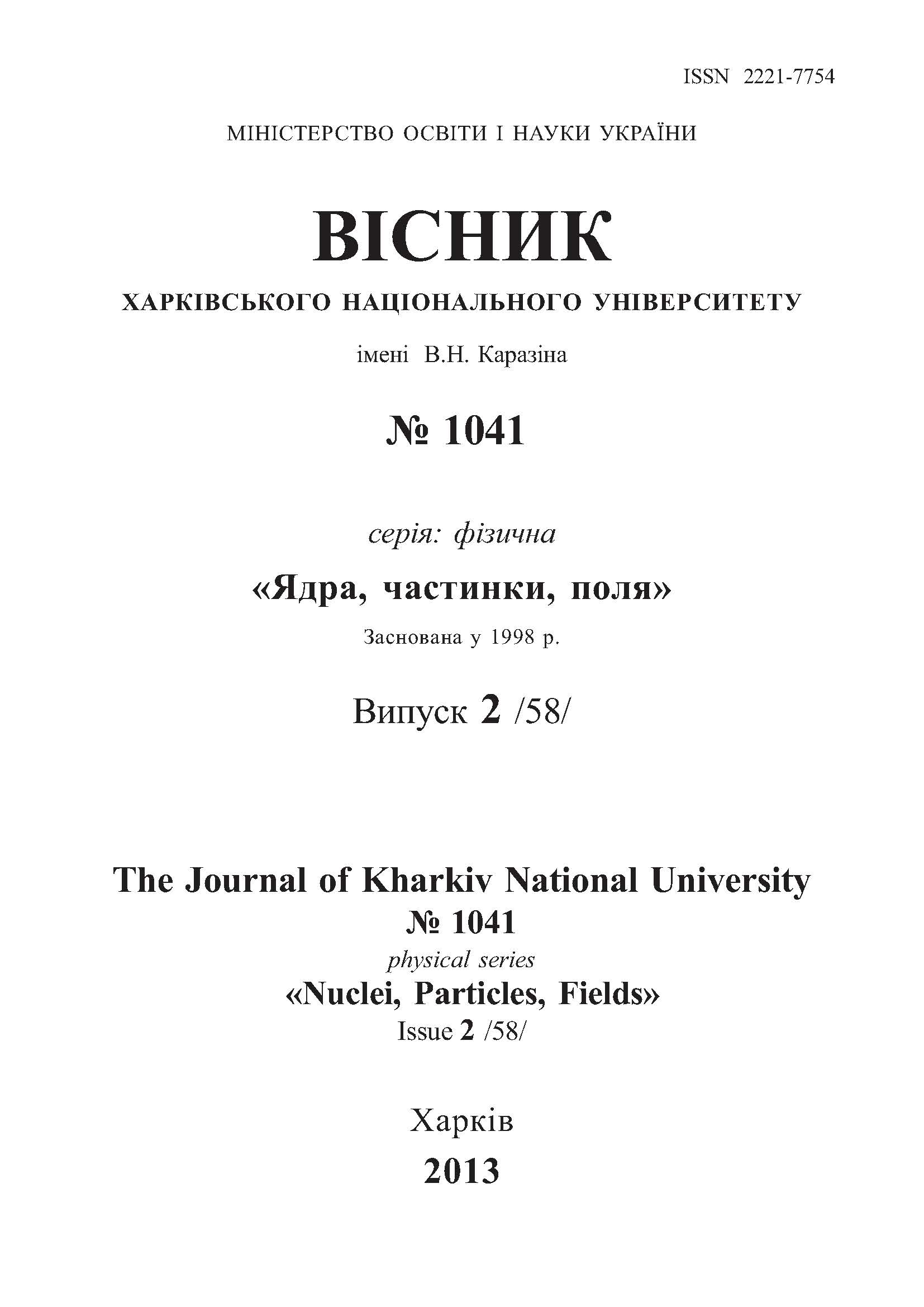Nuclear Burning Wave Reactor: Smooth Start-Up Problem
Abstract
The search for a smooth start-up method preventing the excessive increase of neutron flux and power production in the prospective fast reactor at the stage of establishing the self-sustained nuclear burning wave (NBW) regime is carried out. The problem is studied by means of numerical simulation of the initiation and evolution of NBW in such a reactor. For this simulation we use the deterministic approach based on solving the non-stationary neutron diffusion equation using the effective multi-group approximation together with a set of burn-up equations for fuel components and equations of nuclear kinetics for precursor nuclei of delayed neutrons. The special composition of the ignition zone composition that provides a smooth start-up of the NBW reactor is proposed. The features of the initial stage of the NBW reactor are studied in detail.
Downloads
References
Feoktistov L.P. An analysis of a concept of a physically safe reactor. Preprint IAE-4605/4. IAE, Moscow, 1988.
Feoktistov L.P. Neutron-induced fission wave // Sov. Phys. Doklady. - 1989. – T.34. – S.1071–1073.
Teller E. Nuclear Energy for the Third Millennium. Preprint UCRL-JC-129547, LLNL, Livermore, CA, USA, 1997.
Van Dam H. Self-stabilizing criticality waves // Ann. Nucl. Energy. - 2000. – Vol. 27. – P.1505–1521.
Sekimoto H., Ryu K., Yoshimura Y. CANDLE: the New Burnup Strategy // Nucl. Sci. Engin. - 2001. – Vol.139. – P.306–317.
Sekimoto H. A Light of CANDLE: New Burnup Strategy. - Tokyo: Institute of Technology, 2005.
Fomin S.P., Mel’nik Yu.P., Pilipenko V.V., Shul’ga N.F. Investigation of self-organization of the non-linear nuclear burning regime in fast neutron reactors // Ann. Nucl. Energy. - 2005. – Vol.32. – P.1435–1456.
Fomin S.P., Mel’nik Yu.P., Pilipenko V.V., Shul’ga N.F. Fast reactor based on the self-sustained regime of nuclear burning wave / In: Cechák, T., et al. (Eds.), Nuclear Science and Safety in Europe. Springer, the Netherlands, 2006. – P.239–251.
Fomin S.P., Mel’nik Yu.P., Pilipenko V.V., Shul’ga N.F. Initiation and propagation of nuclear burning wave in fast reactor // Prog. Nucl. Energy. - 2008. – Vol.50. – P.163–169.
Fomin S.P., Fomin A.S., Mel’nik Yu.P., Pilipenko V.V., Shul’ga N.F. Safe Fast Reactor Based on the Self-Sustained Regime of Nuclear Burning Wave. In CD: Proc. of 1st Int. Conf. “Global 2009”, Paris, France, Paper 9456, 2009.
Fomin S.P., Fomin O.S., Mel’nik Yu.P., Pilipenko V.V., Shul’ga N.F. Nuclear burning wave in fast reactor with mixed Th-U fuel // Prog. Nucl. Energy. - 2011. - Vol.53. – P.800–805.
Gates Bill. Technology, Entertainment, Design (TED), 2010, February 12. http://www.ted.com/talks/bill_gates.html
Waltar A.E., Reynolds A.B. Fast Breeder Reactors. - New York: Pergamon Press, 1981.
Potter D. Computational Physics. - London - New York - Sydney – Toronto: John Wiley&Sons, 1973.
Crank J., Nicolson P. A practical method for numerical evaluation of solutions of partial differential equations of the heat-conduction type // Proc. Camb. Phil. Soc. - 1947. – Vol.43. - |P.50–67.
Bondarenko I.I., et al. Group Constants for Nuclear Reactor Calculations. - New York: Consultants Bureau Inc., 1964.
Sekimoto H., Miyashita S. Startup of “Candle” burnup in fast reactor from enriched uranium core // Energy Conv. Manag. - 2006. – Vol.47. – P.2772–2780.
Authors who publish with this journal agree to the following terms:
- Authors retain copyright and grant the journal right of first publication with the work simultaneously licensed under a Creative Commons Attribution License that allows others to share the work with an acknowledgment of the work's authorship and initial publication in this journal.
- Authors are able to enter into separate, additional contractual arrangements for the non-exclusive distribution of the journal's published version of the work (e.g., post it to an institutional repository or publish it in a book), with an acknowledgment of its initial publication in this journal.
- Authors are permitted and encouraged to post their work online (e.g., in institutional repositories or on their website) prior to and during the submission process, as it can lead to productive exchanges, as well as earlier and greater citation of published work (See The Effect of Open Access).








